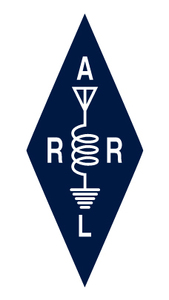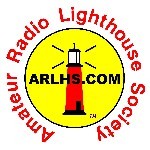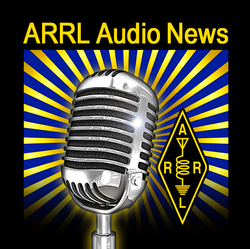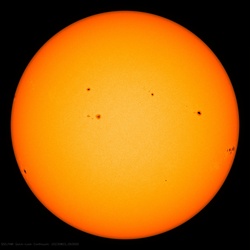 August 3, 2023 John E. Ross, KD8IDJ, Editor
| ||||||
ARRL Files Comments Against "Seriously Flawed" Shortwave Rules Petition ARRL, as part of its mission to protect Amateur Radio, has filed comments against a proposal that would introduce high-power digital communications to the shortwave spectrum that in many instances is immediately adjacent to the Amateur HF bands.
The ARRL Laboratory performed a detailed technical analysis over several months to determine if the proposed rules would affect operations on the bands allocated to Radio Amateurs that are inter-mixed with the Part 90 bands in the spectrum in question. ARRL's analysis determined that, if the proposed rules are adopted, the new operations inevitably will cause significant harmful interference to many users of adjacent and nearby spectrum, including Amateur Radio licensees. Ed Hare, W1RFI, a 37-year veteran of the ARRL Lab and internationally recognized expert on radio frequency interference, was the principal investigator on the study. Hare concluded the petition should not be granted. "This petition seeks to put 50 kHz wide, 20,000-watt signals immediately next to seven different amateur bands with weaker protections against interference than required in other services," said Hare. In its formal opposition, ARRL stated, "That destructive interference would result if operations commenced using anything close to the proposed maximum levels." ARRL's filed comments highlight flawed analysis and incomplete data submitted by the petitioners. It noted the petitioners "...significantly understate the harmful interference that is not just likely, but certain, if the rules proposed by SMC are adopted as proposed. It is noteworthy that SMC's proposed rules would provide less protection than the much-lower power amateur radio transmitters are required to provide Part 90 receivers." ARRL's opposition also noted that there was no reported tests conducted with Amateur or other affected stations, but referenced a spectrum capture in the Comments filed with the Dayton Group that showed actual interference into the Amateur 20-meter band from one of the High Frequency Trading experimental stations. Part 90 HF rules currently authorize a maximum signal bandwidth equal to a voice communications channel, at up to 1000 W peak envelope power (PEP). The petition seeks multiplication of signal width, greater transmitted power, and weaker rules that protect users of adjacent spectrum. ARRL's comments expose the likely fallout: "Incredibly, notwithstanding the significant increase in potential interference that would result from using digital schemes with 50 kHz bandwidths and 20,000 watts of power, SMC also proposes to substantially lessen the protections required to protect adjacent and neighboring licensees. SMC proposes [out-of-band emissions] limits that offer less protection than the existing Part 90 limits and would actually permit no attenuation (0 dB) at the edge of adjacent allocations, many of which are bands allocated to and heavily used in the Amateur Radio Service. Consistent with lessening protections while increasing the potential for harmful interference, SMC also proposes a lower limit for spurious emissions. SMC would reduce the existing protection of -73 dB for the applicable 1000-watt power limit to just -50 dB protection for their proposed 20,000-watt limit. Due to the much wider 50 kHz proposed bandwidth, the resulting interference would penetrate deep into the adjacent Amateur bands." The proposal has been assigned FCC Docket No. RM-11953. While the period for commenting on the petition has now closed, replies to comments in the record may now be submitted. Hundreds of licensed Radio Amateurs filed comments in the Docket, expressing overwhelming opposition to the proposal. Those interested may read ARRL's full comments and the results of the technical analysis, which are included in the filing. "If granted as written, this would be devastating to Amateur operation for many tens of kHz into our bands," said Hare. ARRL will continue to advocate for its members and the Amateur Radio Service in this proceeding. Read ARRL's Opposition and the ARRL Lab's technical analysis here. Amateur Radio Operators Can Help with HAARP Experiment The High-frequency Active Auroral Research Program (HAARP) will host more than 50 researchers at their Alaska facility from August 1 -14, 2023, for the resumption of a science summer school that will conduct 30 experiments over a span of two weeks.
The Polar Aeronomy and Radio Science (PARS) summer school was last held more than 10 years ago. Its return is part of a 5-year, $9.3 million National Science Foundation grant awarded to the University of Alaska Fairbanks in 2021. PARS is a group of more than 50 researchers committed to meeting the growing demand for skilled scientists and engineers with knowledge of the special effects that occur in the ionosphere at high latitudes.
One of the experiments, Ghosts in the Air Glow by Canadian artist Amanda Dawn Christie, will give amateur radio operators and shortwave listeners an opportunity to help with on-going geospace research. This transmission art project will begin on Monday, August 14, 2023, and use the HAARP Ionospheric Research Instrument to mix audio and images from the transition between Earth's atmosphere and outer space. They will then be received and decoded via software-defined radio. Amateur radio operators and shortwave radio listeners around the world are invited to tune in and submit reception reports. Event information, including transmission times, frequencies, modes, and report submission guidelines, is available at the project's website, Ghosts in the Air Glow. Each experiment participants will receive a QSL card. "The return of PARS and these experiments marks a milestone for HAARP and the geospace communities," said HAARP Director Jessica Matthews. National Lighthouse Day 2023 National Lighthouse Day is unofficially Monday, August 7, 2023, and the US National Lighthouse-Lightship Weekend (NLLW) will occur on August 5 - 6. National Lighthouse Day and NLLW celebrate the anniversary of the The suggested calling frequencies for SSB are 1.970, 3.970, 7.270, 14.270, 18.145, 21.370, 28.370. On CW, they're 1.830, 3.530, 7.030, 10.130, 14.030, 18.070, 21.030, and 28.030. These frequencies can be crowded and are only suggestions. Amateur radio operators can use any clear frequency +/- 20 kHz of these suggestions. For digital modes, common operating frequencies are used. On VHF and UHF, repeater operation is allowed, but using the national calling frequencies is encouraged. ARLHS advises operators to be courteous, use good operating practices, and listen before they transmit. The ARLHS World List of Lights (WLOL), which was updated on June 19, 2023, is a comprehensive collection that contains information on 15,527 lighthouses in 234 amateur radio call areas. You can also find the times and dates of operation for the special events on the website. The International Lighthouse Lightship Weekend 2023 (ILLW) will take place on August 19 - 20. Each year ILLW attracts more than 500 lighthouse entries located in at least 40 countries. There are few rules, and it is not a usual contest type event. Participation is also free and, there are no prizes for contacting large numbers of stations. Amateur Radio in the News ARRL Public Information Officers, Coordinators, and many other member-volunteers help keep amateur radio and ARRL in the news. "Amateur Radio Society conducts Emergency Response Training and Blood Drive" / Lakelands Connector (South Carolina) July 26, 2023 -- The Greenwood Amateur Radio Society is an ARRL Affiliated Club. "Hamfest hobbyists combine electronics and communications at OCCC" / KFOR - TV (Oklahoma) July 29, 2023 -- The Central Oklahoma Radio Amateurs is an ARRL Affiliated Club. "Amateur radio seeing resurgence as hobby, sport, community service" / New Albany Gazette (Mississippi) July 30, 2023 -- The Grid 54 Ham Radio Group. ARRL Podcasts On the Air Passing traffic is a ham radio activity that's nearly as old as ham radio itself, and getting accurate messages to their destination in a timely manner takes training and skill. In addition to participating in nets, hams also have the opportunity to take on ARRL Field Organization positions that are responsible for traffic. In this episode, "When Messages Matter: Passing Traffic," we talk to Ethan Hansen, KC1OIP, who fulfills one such position, Official Relay Station, in ARRL's National Traffic System. Listen in to learn about what it takes to become an Official Relay Station, how the position makes a difference in the community, and how it benefits your amateur radio skills and experience. ARRL Audio News The On the Air podcast is available on iTunes (iOS) and Stitcher (Android). The On the Air podcast and ARRL Audio News are also on blubrry -- On the Air | ARRL Audio News. Announcements Planning is underway for the 2023 Route 66 On the Air Special Event on September 9 - 17. This will be the 24th year of the event has been running. It was started by the Northern Arizona DX Association (NADXA) and is now coordinated by the Citrus Belt Amateur Radio Club (CBARC) in San Bernardino, California. Twenty-one special event stations along the route from Santa Monica, California, to Chicago, Illinois, are expected to participate in 9 days of operating opportunities. The special event celebrates the history of the Mother Road that began in 1926, when US Highway 66 was established. It was the first major improvement to the link between the west coast and the nation's heartland. Through stories, songs, and TV shows, the highway came to symbolize the freedom of the open road, inspiring many to see America in its entirety. The demise of Route 66 began in the 1950s, as construction began on the new interstate highway system. US Route 66 was officially decommissioned in 1986, but today, small portions of the highway still exist in several states. More information on the event will be available soon at the Citrus Belt Amateur Radio Club (CBARC) website or on their Facebook page. In Brief... On July 28, 2023, members of the Royal Naval Amateur Radio Society (RNARS) commemorated 30 years of being located on the HMS Collingwood. The RNARS was founded in 1960, and moved to HMS Collingwood when the HMS Mercury was decommissioned. The outgoing captain, now Commodore Paul Sutermeister RN, was instrumental in finding a new home for the RNARS. The Headquarters Shack in HMS Collingwood has a selection of transceivers that operate across the radio spectrum via range of antennas. These allow members to communicate with other radio amateurs around the world, including by amateur radio satellite. While the majority of RNARS members are actively serving or are service veterans, there are other groups who qualify for membership, such as merchant navy and Royal Fleet Auxiliary personnel and several others with occupations and interests in maritime affairs. While some of the members have aviation and marine licenses, they are a friendly mixture of professional and amateur radio users, with links to both the Royal Air Force and Royal Signals Amateur Radio societies: - all are affiliate members of the Radio Society of Great Britain (RSGB). The K7RA Solar Update Tad Cook, K7RA, of Seattle, Washington, reports for this week's ARRL Propagation Bulletin, ARLP031:
The Australian Space Weather Forecasting Centre issued a geomagnetic disturbance warning at 0233 UTC on August 3, 2023: "Two recent coronal mass ejections (CMEs) are expected to impact Earth on UT day 05-Aug, with the second possibly arriving early 06-Aug. G0-G1 geomagnetic conditions may be expected on 05-Aug, with a chance for isolated periods of G2 towards the end of the UT day on 05-Aug. Geomagnetic storm conditions may persist over 06-Aug." Solar activity was up during this reporting week, July 27 through August 2. Average daily sunspot numbers increased from 128.1 to 154.3, but the average daily solar flux was about the same as last week, moving from 172.2 to 173. Geomagnetic indicators were quiet, with the average daily planetary A index shifting from 11 to 8.3, while middle latitude numbers went from 11.1 to 9.3. Predicted solar flux is 170 and 165 on August 3 - 4; 160 on August 5 - 7; 155, 145, and 168 on August 8 - 10; 168 on August 11 - 12; 170 on August 13 - 16; 172 on August 17 - 18; 170 and 168 on August 19 - 20; 170 on August 21 - 22; 172 on August 23; 170 on August 24 - 27, and 165 on August 28 - 31. Predicted planetary A index is 10, 20, 28, 15, and 8 on August 3 - 7; 5, 5, and 10 on August 8 - 10; 8 on August 11 - 12; 5 on August 13 - 25; 12 and 10 on August 26 - 27, and 5 on August 28 - 31. ARRL published an excellent new book, Here to There: Radio Wave Propagation, written by a team of experts, including Frank Donovan, W3LPL; Nathaniel Frissell, W2NAF, and Carl Luetzelschwab, K9LA. It's a great reference on all aspects of HF and VHF propagation and it includes a survey of the various propagation prediction computer programs. Sunspot numbers for July 27 through August 2 were 154, 148, 147, 139, 197, 160, and 135, with a mean of 154.3. The 10.7-centimeter flux was 165.3, 168.2, 178.6, 174.4, 177.1, 174.7, and 172.9, with a mean of 173. Estimated planetary A indices were 7, 6, 9, 9, 6, 9, and 12, with a mean of 8.3. Middle latitude A index was 7, 5, 8, 18, 8, 9, and 10, with a mean of 9.3. Send your tips, questions, or comments to k7ra@arrl.net. A comprehensive K7RA Solar Update is posted Fridays on the ARRL website. For more information concerning radio propagation, visit the ARRL Technical Information Service, read "What the Numbers Mean...," and check out the Propagation Page of Carl Luetzelschwab, K9LA. A propagation bulletin archive is available. For customizable propagation charts, visit the VOACAP Online for Ham Radio website. Share your reports and observations. A weekly, full report is posted on ARRL News. Just Ahead in Radiosport Yearlong -- ARRL Volunteers On the Air (VOTA). See the State Activations Schedule for weekly W1AW Portable Operations, including:
Upcoming Contests:
Visit the ARRL Contest Calendar for more events and information. Upcoming Section, State, and Division Conventions
Search the ARRL Hamfest and Convention Database to find events in your area. Have News for ARRL? Submissions for the ARRL Letter and ARRL News can be sent to news@arrl.org. -- John E. Ross, KD8IDJ, ARRL News Editor
ARRL -- Your One-Stop Resource for
Subscribe to...
Free of charge to ARRL members...
| ||||||
 The "Shortwave Modernization Coalition" (SMC), which represents certain high-frequency stock trading interests, filed
The "Shortwave Modernization Coalition" (SMC), which represents certain high-frequency stock trading interests, filed 

 establishment of the United States Lighthouse Service, and they honor lighthouses, lightships, and the commitment and service of those who tended America's lights for generations. The
establishment of the United States Lighthouse Service, and they honor lighthouses, lightships, and the commitment and service of those who tended America's lights for generations. The .jpg)
 Listen to
Listen to 
-2023.jpg)
-Blue.jpg)








